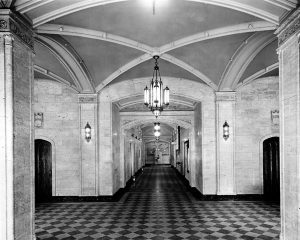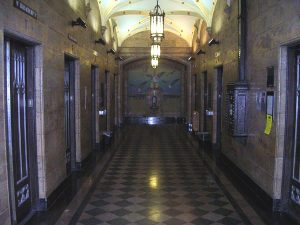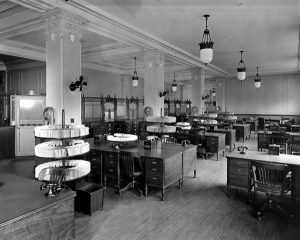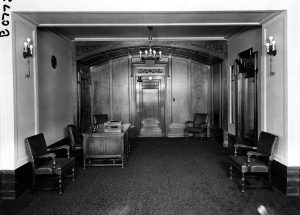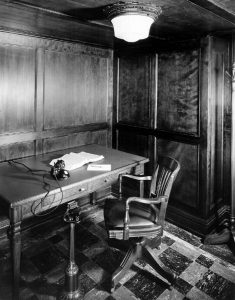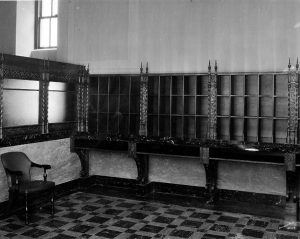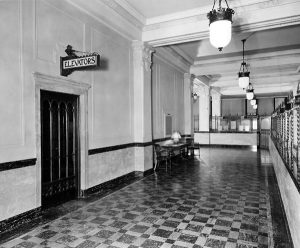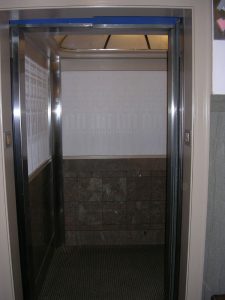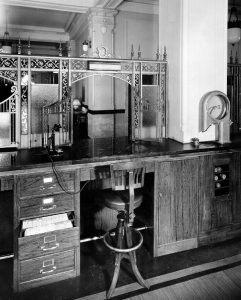Telecommunications History Group Resources
931 14th St. Historic Building
Main Floor - Building Tour
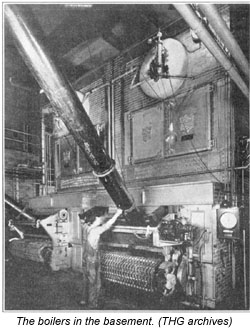 With 45,000 customers in and out of this business office each month in 1929, the Curtis entrance was conveniently designed for customers to pay their bills in person. One hundred and ten employees, known collectively as the Commercial Department, served customers. Six teller cages ran along the north side, with offices and counters available for interviews. Counters extended along the east side for stenographers and order writers. Order checkers’ offices were also on this side. Tellers used a pneumatic tube delivery system to deliver payments to the Commercial Office on the 9th floor.
With 45,000 customers in and out of this business office each month in 1929, the Curtis entrance was conveniently designed for customers to pay their bills in person. One hundred and ten employees, known collectively as the Commercial Department, served customers. Six teller cages ran along the north side, with offices and counters available for interviews. Counters extended along the east side for stenographers and order writers. Order checkers’ offices were also on this side. Tellers used a pneumatic tube delivery system to deliver payments to the Commercial Office on the 9th floor.
Now, the Curtis St. entrance is locked and is referred to as the “ghost lobby”; it is unused and most of the teller cages are long gone (and the wrought iron around them has been moved to decorate the employee break room on the fifteenth floor).
There was also a public office on this floor serving customers who wished to make long distance or local calls from private booths; this was a separate room, well-furnished with upholstered chairs, “an air cushioned leather sofa, [and] a large library table centered with an Italian pottery vase.” It included private booths and separate rooms equipped with chairs and desks, “where salesmen for national concerns may spend several hours or an entire day calling up their customers.” A library of phone directories was also found on this floor.
Sidebar: Operating the Elevators
In 1929, the idea of a fully automated elevator was quite new–so new, in fact, that the elevators in the phone building spooked some visitors, who expected the contraptions to be operated at least partly by hand. The phone company thus hired “elevator operators” to stand and push the buttons.
The 1,510 employees of the phone company used the entrance on 14th St. (the only entrance open today). Both lobbies were (and are) adorned by magnificent murals painted by Colorado artist Allen True; more about the murals can be found here. Today, the 14th St. lobby is as far as you can get; due to security concerns (since the building is still a working central office owned by Qwest Communications), visitors are not allowed into the building without an escort.
See the gallery below for more images of the main floor, from 1929 to 2006.
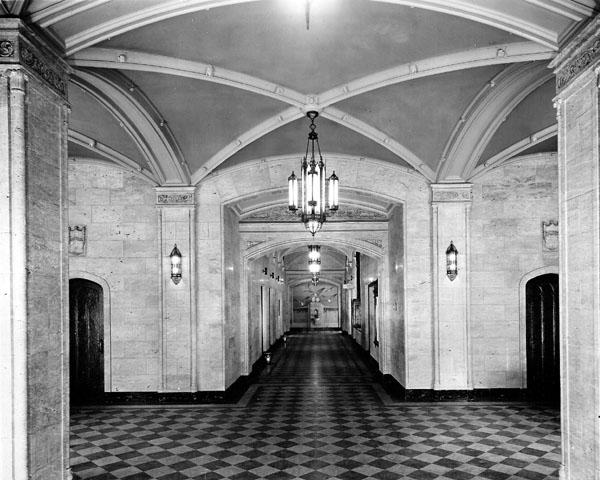 A view of the 14th Street lobby as it was in 1929. Compare this with the panorama on the Main Floor page and the lobby hallway view below.
A view of the 14th Street lobby as it was in 1929. Compare this with the panorama on the Main Floor page and the lobby hallway view below.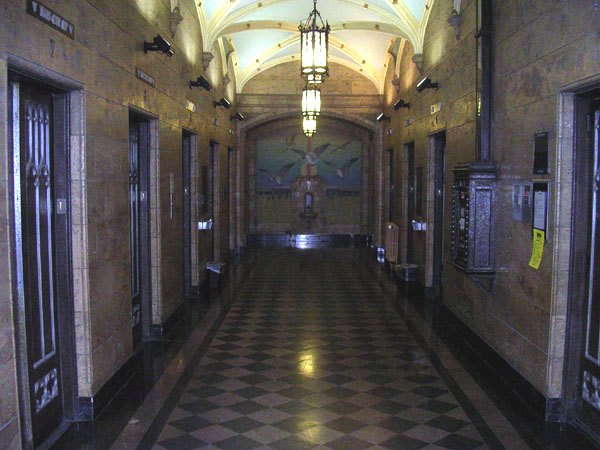 The 14 Street lobby hallway leading past the elevators to the drinking fountain, 2006.
The 14 Street lobby hallway leading past the elevators to the drinking fountain, 2006.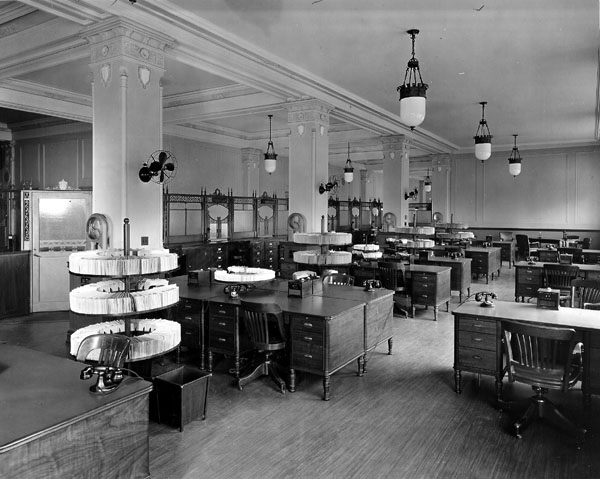 Treasury office, 1929
Treasury office, 1929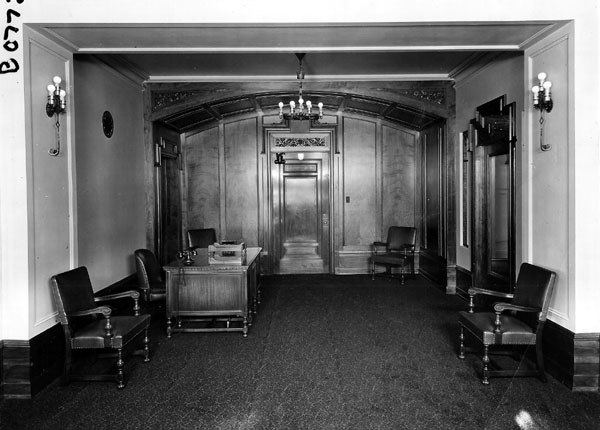 Reception area, 1929
Reception area, 1929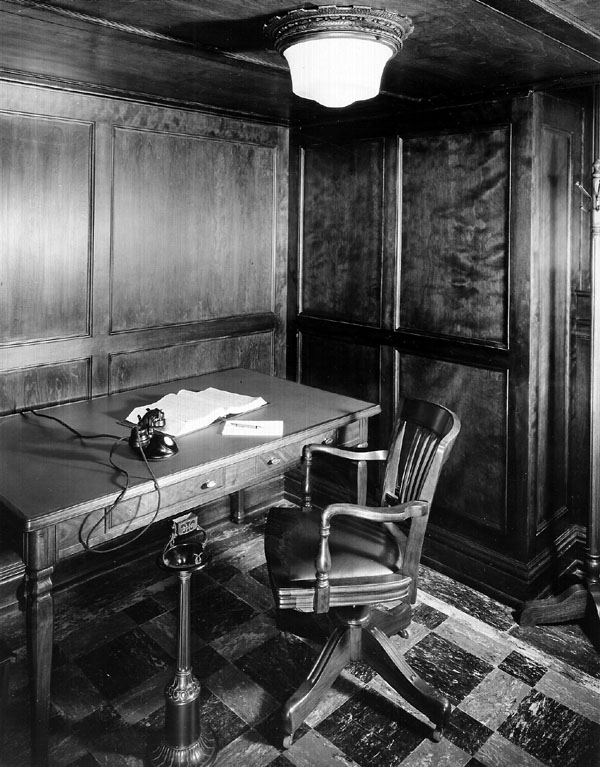 Workspace provided for customer use, 1929
Workspace provided for customer use, 1929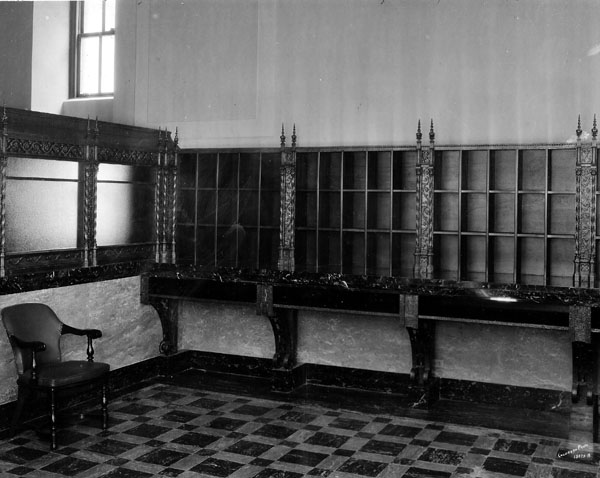 Shelves for non-local telephone directories for customer use, 1929
Shelves for non-local telephone directories for customer use, 1929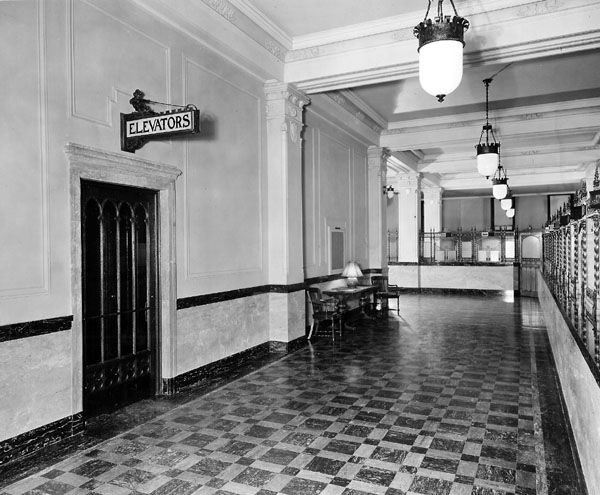 Payment lobby, looking down the hallway, 1929
Payment lobby, looking down the hallway, 1929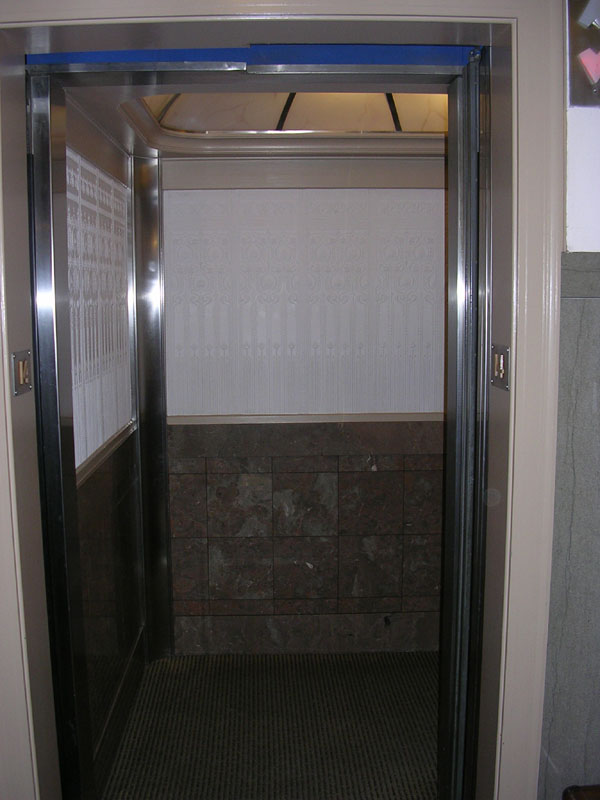 A view of an open elevator, 2006.
A view of an open elevator, 2006.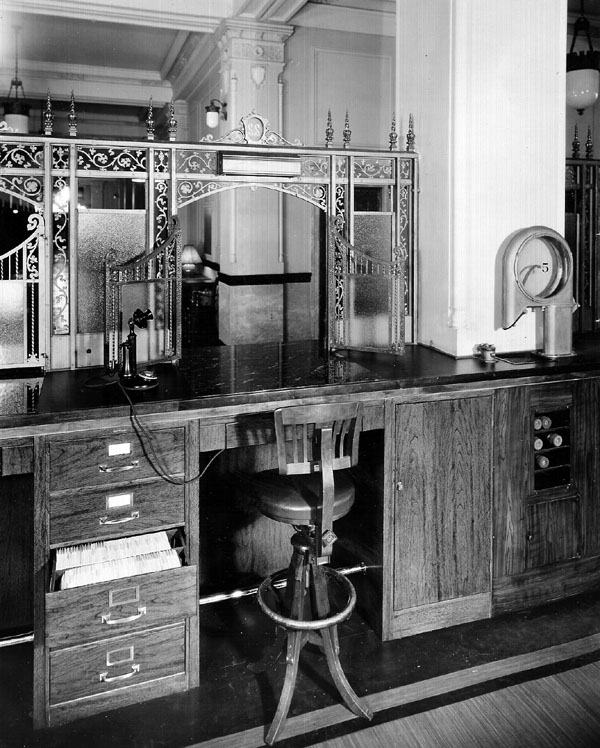 A teller cage from the teller's side, as it was in 1929.
A teller cage from the teller's side, as it was in 1929.

